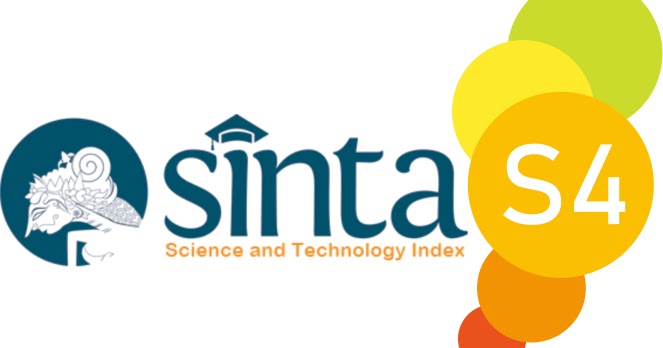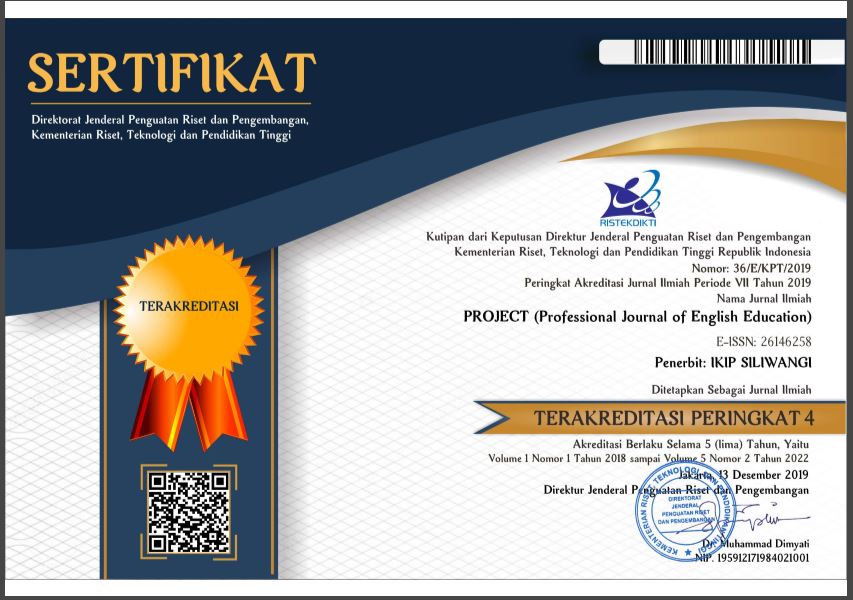The Effect of Reading Logs on Students' Reading Comprehension Performance at SMPN 3 Timpah
Abstrak
Reading logs are a promising tool for improving reading comprehension by fostering engagement, reflection, and metacognitive skills. This research investigates the effect of reading logs on students’ reading comprehension performance and their perceptions of its use at SMPN 3 Timpah during the 2024/2025 academic year. Focusing on rural education, it explores how reading logs support comprehension of narrative, descriptive, and procedural texts, aiming to enhance performance scores. A quantitative one-group pretest-posttest design was employed, using pretests and posttests to measure comprehension and a Likert-scale questionnaire for secondary data. The study involved 55 students from grades 7, 8, and 9. Data analysis included paired sample t-tests for performance and descriptive statistics for opinions. Results indicated significant improvement in comprehension, with p-values of 0.000 across all grades. Average scores rose from 47.1 to 62.9 in grade 7, 61.3 to 75.1 in grade 8, and 62.2 to 75.6 in grade 9. Students credited reading logs for helping identify key concepts, expand vocabulary, and enhance summarization and analysis skills. Favorable questionnaire responses highlighted the tool’s user-friendly, organized nature and its ability to boost motivation, engagement, and critical thinking. This study underscores reading logs’ potential as an effective EFL instructional strategy.
Referensi
Ary, D., Jacobs, L. C., Sorensen, C., & Razavieh, A. (2010). Introduction to research in education (8th ed.). Canada: Wadsworth Cengage Learning.
Bruner, J. S., & Minturn, A. L. (1955). Perceptual identification and perceptual organization. Journal of Experimental Psychology, 50(3), 213-218.
Campbell, D. T., & Stanley, J. C. (1966). Experimental and quasi-experimental designs for research. Houghton Mifflin.
Chen, J., & Lee, C. (2015). The impact of reading logs on EFL learners' reading comprehension and summarizing skills. Journal of Language Teaching and Research, 6(2), 231–239. https://doi.org/10.17507/jltr.0602.02
Cohen, L., Marion, L., & Morrison, K. (2005). Research methods in education (5th ed.). New York: Routledge Falmer.
Cosentino, C. L. (2017). The effects of self-regulation strategies on reading comprehension, motivation for learning, and self-efficacy with struggling readers. Educational Psychology Review. https://doi.org/10.1007/s10648- 013-9245-z
Cosentino, M. (2017). Motivational strategies in reading comprehension: A systematic review on the use of reflective tools in educational settings. Educational Review, 69(3), 315–334. https://doi.org/10.1080/00131911.2017.1288316
Creswell, J. W. (2012). Educational research: Planning, conducting, and evaluating quantitative and qualitative research (4th ed.). Pearson.
Creswell, J. (2014), Research design: Qualitative, quantitative, and mixed methods approaches (4th ed.). SAGE.
Currier. (2013). Using reading logs to improve comprehension of science text. Thesis Magister,
Montana State University.
Dalal, S., & Riya, M. (2023). A study on self-perception in relation to academic achievement of adolescents. International Journal of Frontiers in Medical and Biological Research, 5(3), May-June, 3151. https://doi.org/10.36948/ijfmr.2023.v05i03.3151
Denton, C. A., Montroy, J. J., Zucker, T. A., & Cannon, G. (2020). Designing an intervention in reading and self-regulation for students with significant reading difficulties, including dyslexia. Learning Disability Quarterly. https://doi.org/10.1177/0731948719899479
Denton, J., Smith, L., & Miller, P. (2020). Reading logs as a strategy to improve student engagement and reading comprehension among EFL learners. TESOL Quarterly, 54(4), 963–978. https://doi.org/10.1002/tesq.562
Farah, A., & Al-Hattami, A. (2023). An exploration study of students’ engagement and perception of the teaching and learning environment. Journal of Higher Education Theory and Practice, 23(9). https://doi.org/10.33423/jhetp.v23i9.6126
Fayyaz, S. S., & Akram, A. (2022). Students' perception of smartphones as a new modality to enhance health sciences knowledge. Journal of Social & Health Sciences, 1, 13-21. https://doi.org/10.58398/0001.000003
Field, A. (2013). Discovering statistics using IBM SPSS statistics (4th ed.). Sage.
Fisher, D., & Frey, N. (2014). Content area vocabulary learning. The Reading Teacher, 67(7), 466–476. https://doi.org/10.1002/trtr.1243
Fraenkel, J. R., Wallen, N. E., & Hyun, H. H. (2011). How to design and evaluate research in education (8th ed.). McGraw-Hill.
Furqon, F. (2013). Correlating students’ vocabulary mastery and reading comprehension. Journal of English and Education, 1(1), 68–80.
Gelan, A., Zucker, T., & Cannon, G. (2020). Measuring online engagement by the number of times students log in the VLE to follow a learning session. Journal of Educational Technology.
Gelan, F., Liao, H., & Santos, R. (2020). Perceptions of reading logs among EFL students in rural settings: A case study on comprehension improvement. Language Teaching Research, 24(6), 787–801. https://doi.org/10.1177/1362168820914068
Ghozali, I. (2018). Aplikasi analisis multivariate dengan program IBM SPSS 25 (9th ed.). Badan Penerbit Universitas Diponegoro.
Gibson, J. J. (1979). The ecological approach to visual perception. Boston: Houghton Mifflin.
Goldstein, E. B. (2010). Sensation and perception (8th ed.). Cengage Learning.
Grellet, F. (1999). Developing reading skill. London: Cambridge University Press.
Irwanto. (2014). Psikologi umum. Jakarta: Gramedia Pustaka Utama.
Istiqlal, N. A., et al. (2021). Portraying reading log strategy assisting extensive
reading activity with Webtoon in senior high school. Indonesian Journal of Applied Linguistics, 11(1), 25–35. https://doi.org/10.17509/ijal.v11i1.21719
Jansen, J. (2010). Descriptive quantitative research gathers and analyzes numerical data to accurately depict trends and characteristics.
Kalsum, U., et al. (2022). Implementation of Reading-Log to Increase Students’ Interest in Literacy at Islamic Boarding School. Journal of Islamic Education Research, 10(3), 123–133. https://doi.org/10.52932/jier.2022.10.3.123
Karakas, M. (2017). The role of reading journals in developing EFL students' vocabulary and comprehension: A case study. European Journal of Education Studies, 3(1), 43–56. https://doi.org/10.5281/zenodo.400775
Kintsch, W., & Kintsch, E. (2005). Comprehension. In Children's reading comprehension and assessment (pp. 89-110). Routledge.
Lesaux, N. K. (2012). Reading and reading instruction for children from low-income and non-English-speaking households. The Future of Children, 73-88.
Lyutaya, T. (2011). Reading logs: Integrating extensive reading with writing tasks. English Teaching Forum, 49(1), 26-34.
McMillan, J. H. (2012). Educational research: Fundamentals for the consumer. Pearson.
Murray, D. E., & Christison, M. (2019). What English language teachers need to know volume I: Understanding learning. Routledge.
Nation, I. S. P. (2013). Learning vocabulary in another language (2nd ed.) Cambridge University Press.
Peregoy, S. F., & Boyle, O. F. (2000). English learners reading English: What we know, what we need to know. Theory into Practice, 39(4), 237-247.
Pradanti, P., & Muqtada, M. R. (2023). Students’ perceptions on learning, motivation, and performance through project-based learning: Undergraduate students’ case. PYTHAGORAS Jurnal Program Studi Pendidikan Matematika, 12(1), 16-26. https://doi.org/10.33373/pythagoras.v12i1.5011
Rahmawati, H. (2019). The students' perception on academic reading log for essay writing literacy: Some influential points. Journal of Education and Learning, 13(2), 101–110. https://doi.org/10.11591/edulearn.v13i2.13915
Robinson, L., & Hullinger, M. (2019). Learner satisfaction, engagement, and performance in an online module: Implications for institutional e-learning policy. Education and Information Technologies, 23(3), 1115-1134.
Saadatnia, M., Ketabi, S., & Tavakoli, M. (2017). EFL learners' reading comprehension problems: Literal, interpretative, and critical reading comprehension. Reading Psychology, 38(8), 802–830.
Santrock, J. W. (2008). Educational psychology (4th ed.). McGraw-Hill.
Salsabila, N., Pratiwi, W. S., & Rahmat, I. A. (2021). Students' perceptions of reading logs as a tool for improving reading comprehension in an EFL classroom. Journal of Language Teaching and Research, 12(4), 520-532.
Salsabila, R., Nugraha, A., & Putri, A. E. (2021). The effect of extensive reading on students’ vocabulary mastery and reading comprehension. Journal of Language Teaching and Learning, 11(3), 124-135.
Saris, W. E., & Gallhofer, I. N. (2014). Design, evaluation, and analysis of questionnaires for survey research. John Wiley & Sons.
Schatz, E. K., & Baldwin, R. S. (1986). Context clues are unreliable predictors of word meanings. Reading Research Quarterly, 21(4), 439–453. https://doi.org/10.2307/747615
Schmitt, N. (2010). Researching vocabulary: A vocabulary research manual. Palgrave Macmillan.
Shadish, W. R., Cook, T. D., & Campbell, D. T. (2002). Experimental and quasi-experimental designs for generalized causal inference. Houghton Mifflin.
Slameto. (2013). Belajar dan faktor yang mempengaruhinya. Jakarta: Rieneka Cipta.
Snow, C. E. (2002). Reading for understanding: Toward an R&D program in reading comprehension. RAND Corporation.
Snowling, M. (2009). Reading comprehension: Nature assessment and teaching. Retrieved from http://eprints.lancs.ac.uk/50134/1/ESRCcomprehensionbooklet.pdf.
Sternberg, R. J. (2006). Cognitive psychology (4th ed.). Wadsworth Publishing.
Sugiyono. (2017). Metode penelitian kuantitatif, kualitatif, dan R&D. Bandung: CV. Alfabeta.
Suryanto. (2014). Issues in teaching English in a cultural context: A case of Indonesia. The Journal of English Literacy Education, 1(2), 75-82.
Tuomainen, S. (2023). University students' perceptions of teaching quality before and after the Covid-19 pandemic. European Journal of Educational Sciences, 10(7), 37-60. https://doi.org/10.46827/ejes.v10i7.4863
Vygotsky, L. S. (1978). Mind in society: The development of higher psychological processes. Harvard University Press.
Walgito, B. (2004). Pengantar psikologi umum. Yogyakarta: ANDI.
Westwood, P. (2008). What teachers need to know about reading and writing difficulties. ACER Press.
Wiersma, W., & Jurs, S. G. (1990). Research methods in education: An introduction (4th
ed.). Allyn & Bacon.
Winiharti, M., Herawat, A., & Rahayu, E. (2014). Reading journal as a way to improve students’ comprehension toward textbook reading material. Jurnal Lingua Cultura, 8, 101–108.
Woolley, G. (2011). Assisting children with learning difficulties. Australia: Springer Science and Business Media.
Yamashita, J. (2013). Effects of extensive reading on reading attitudes in a foreign language. Reading in a Foreign Language, 25(2), 234–248.
Yufhita, S., Sutapa Yuliana, Y., Apriliaswati, W., & Rahmani, E. (2023). Students’ perceptions toward the process of online English language teaching and learning. Lingual Journal of Language and Culture, 15(1), 48. https://doi.org/10.24843/LJLC.2023.v15.i01.p07





